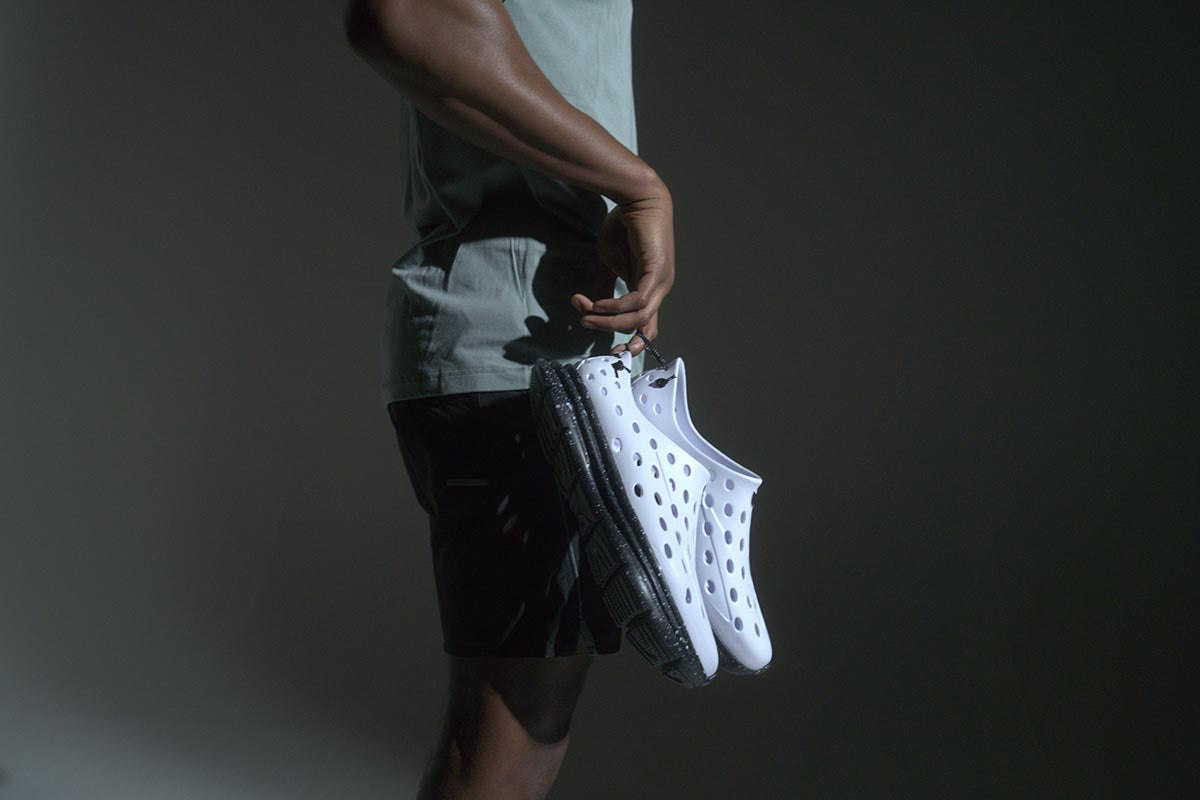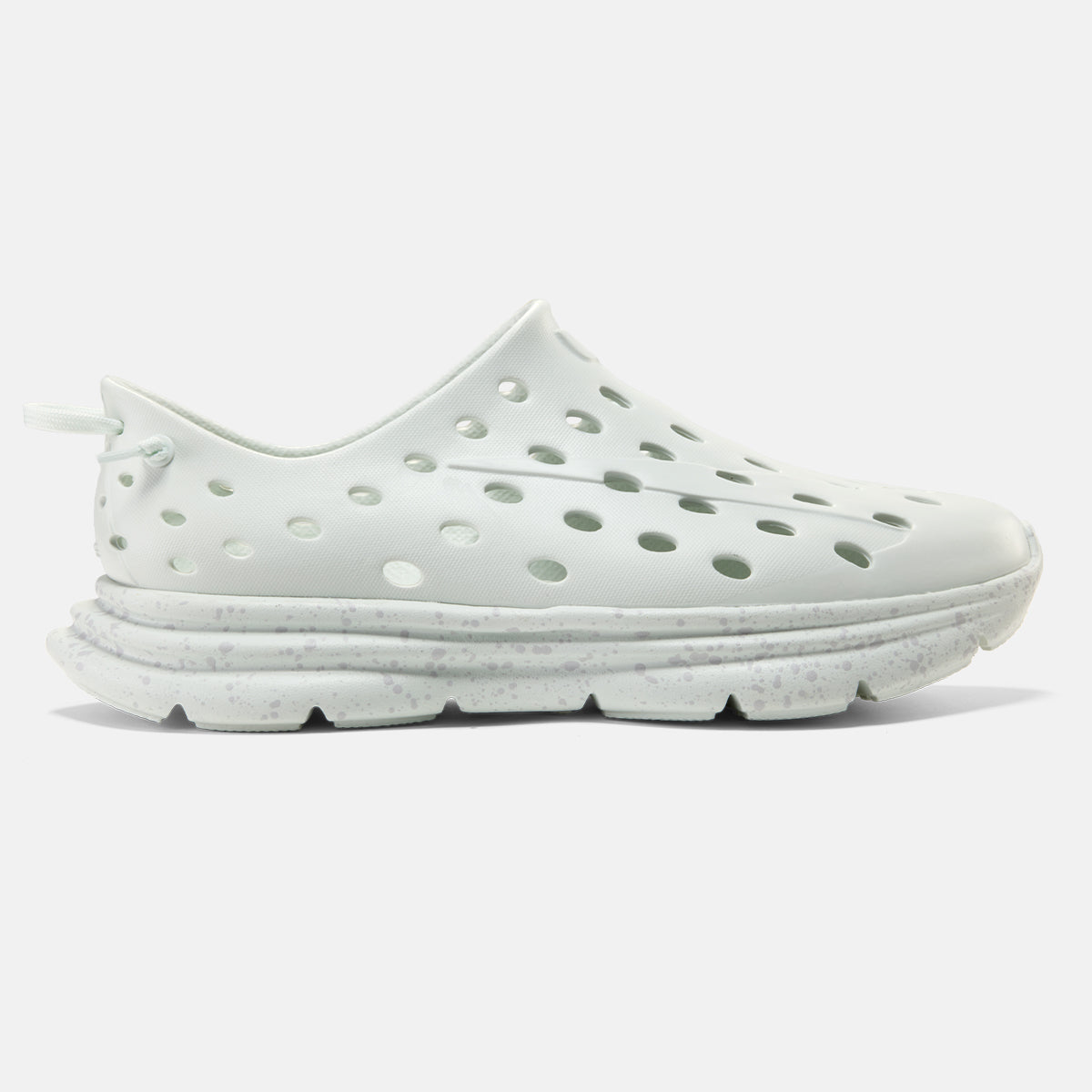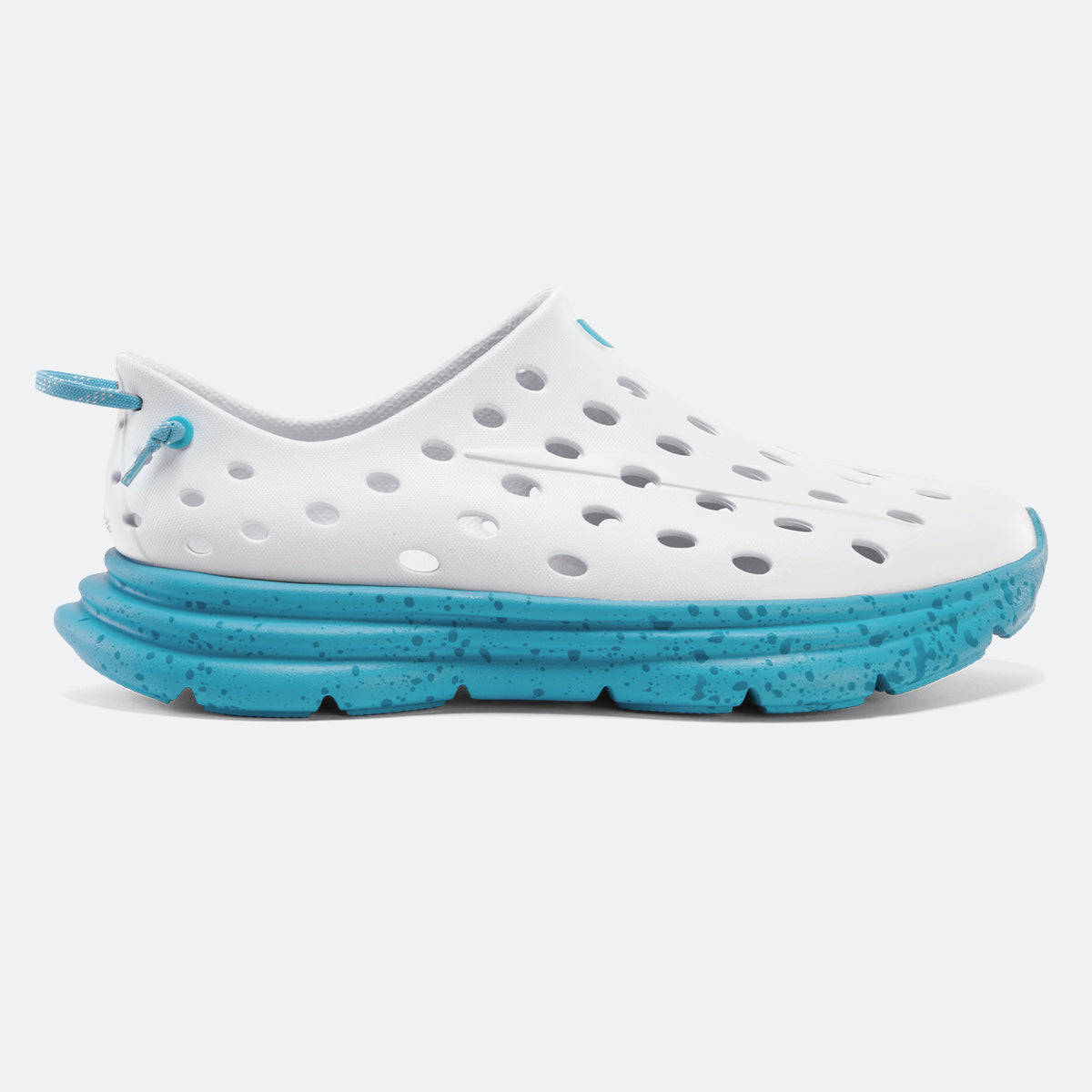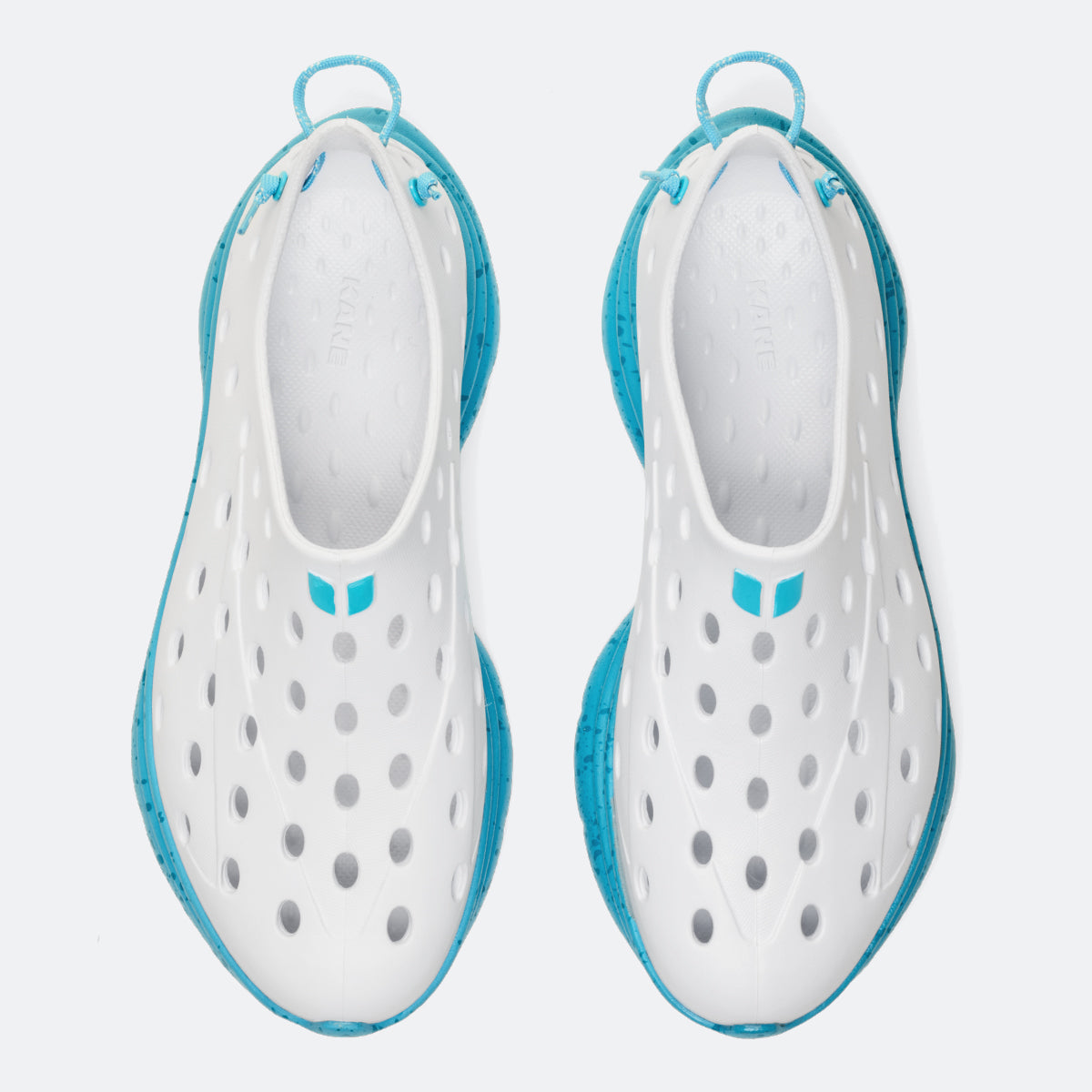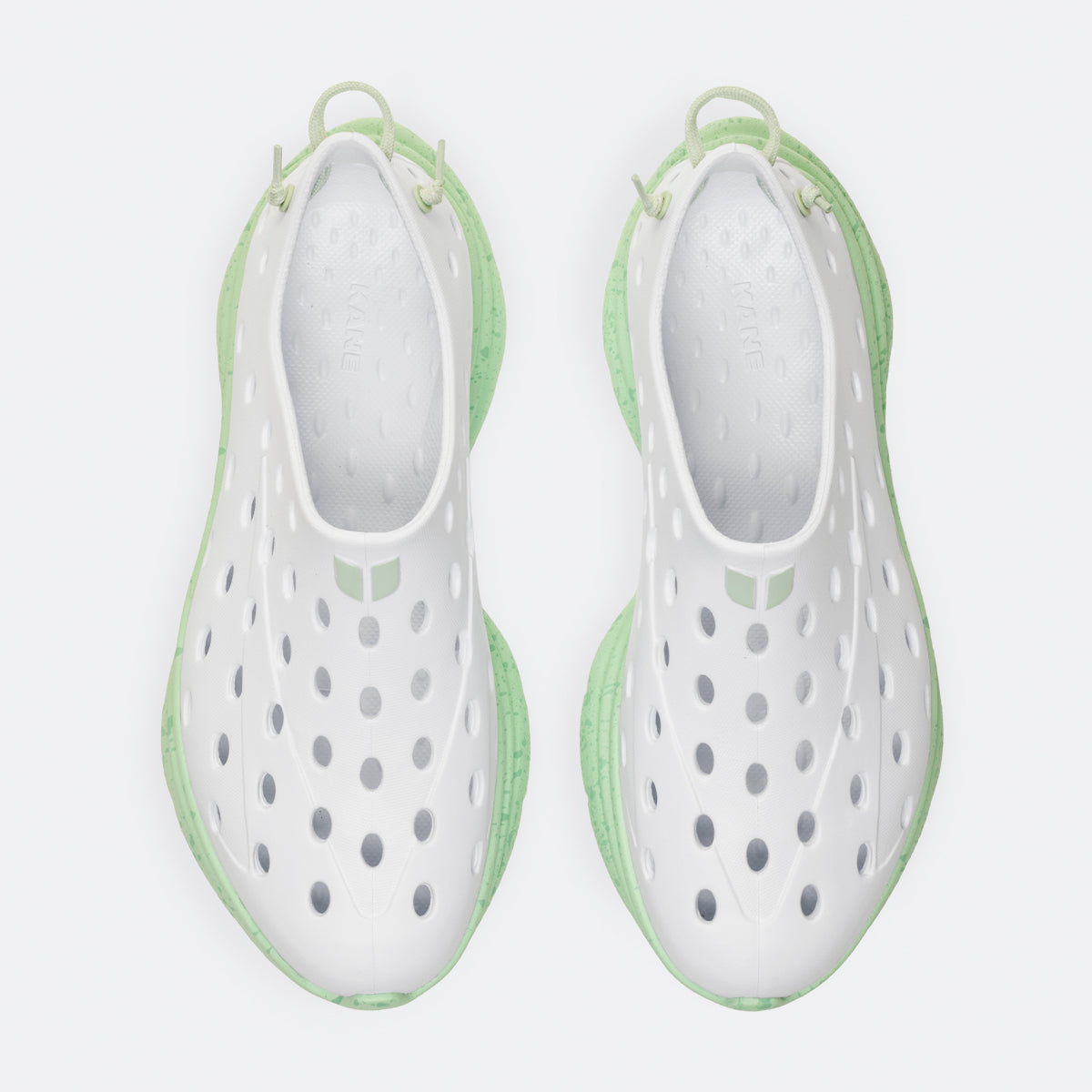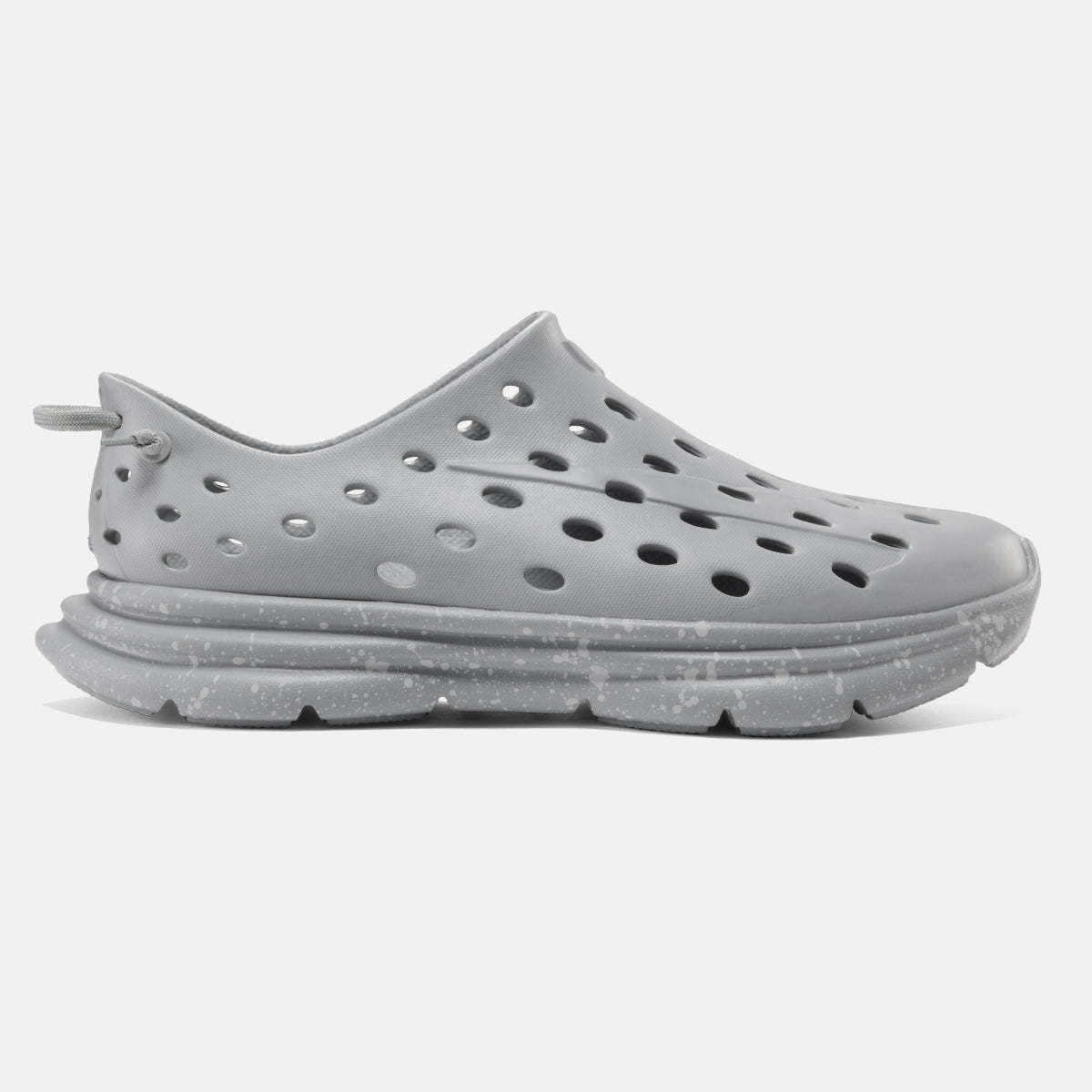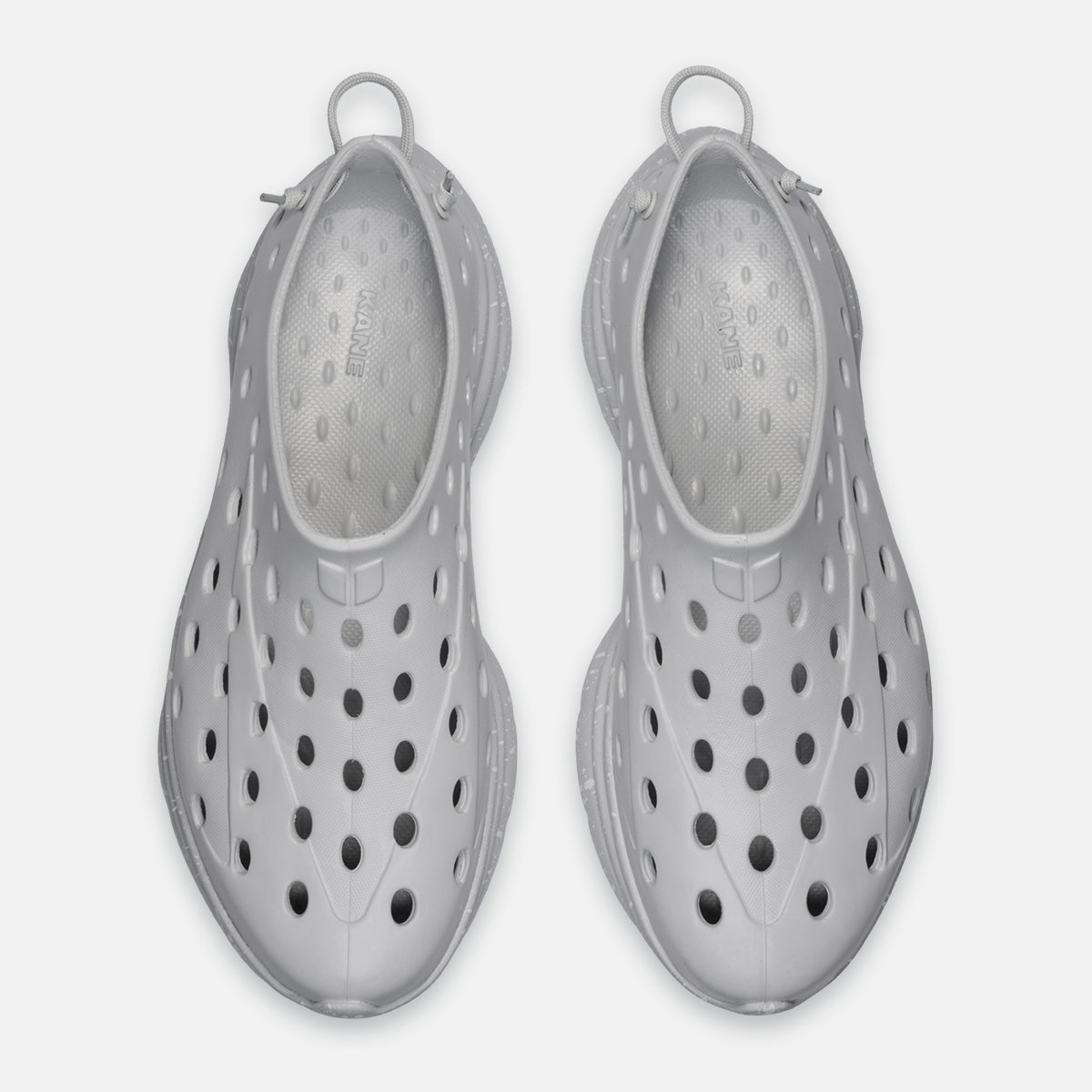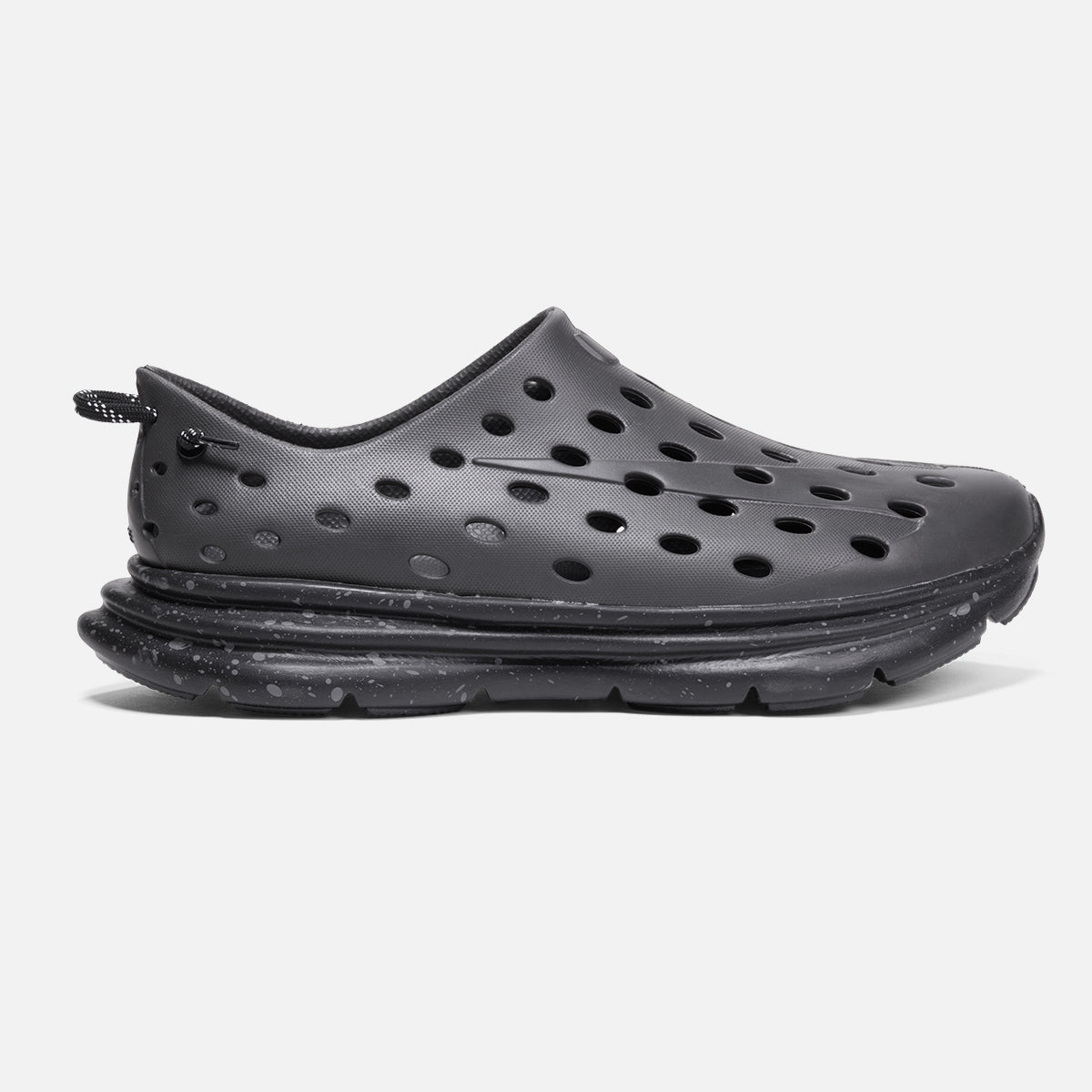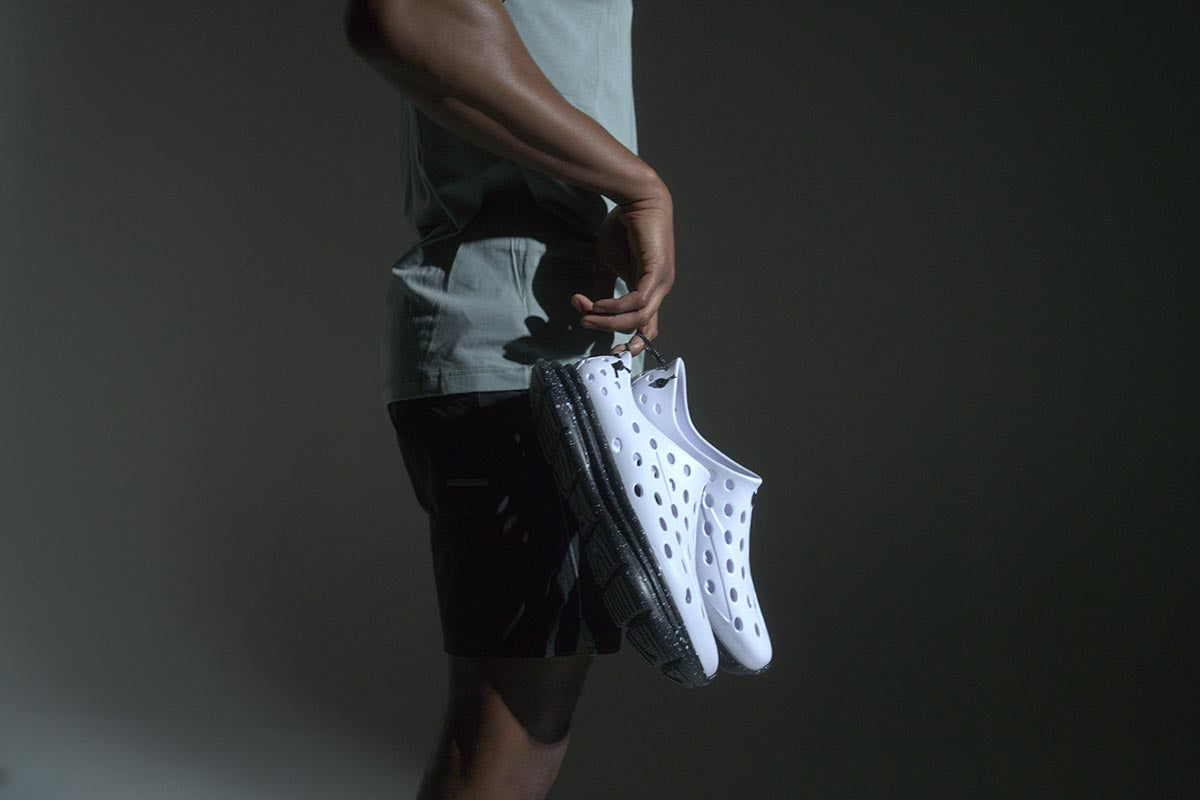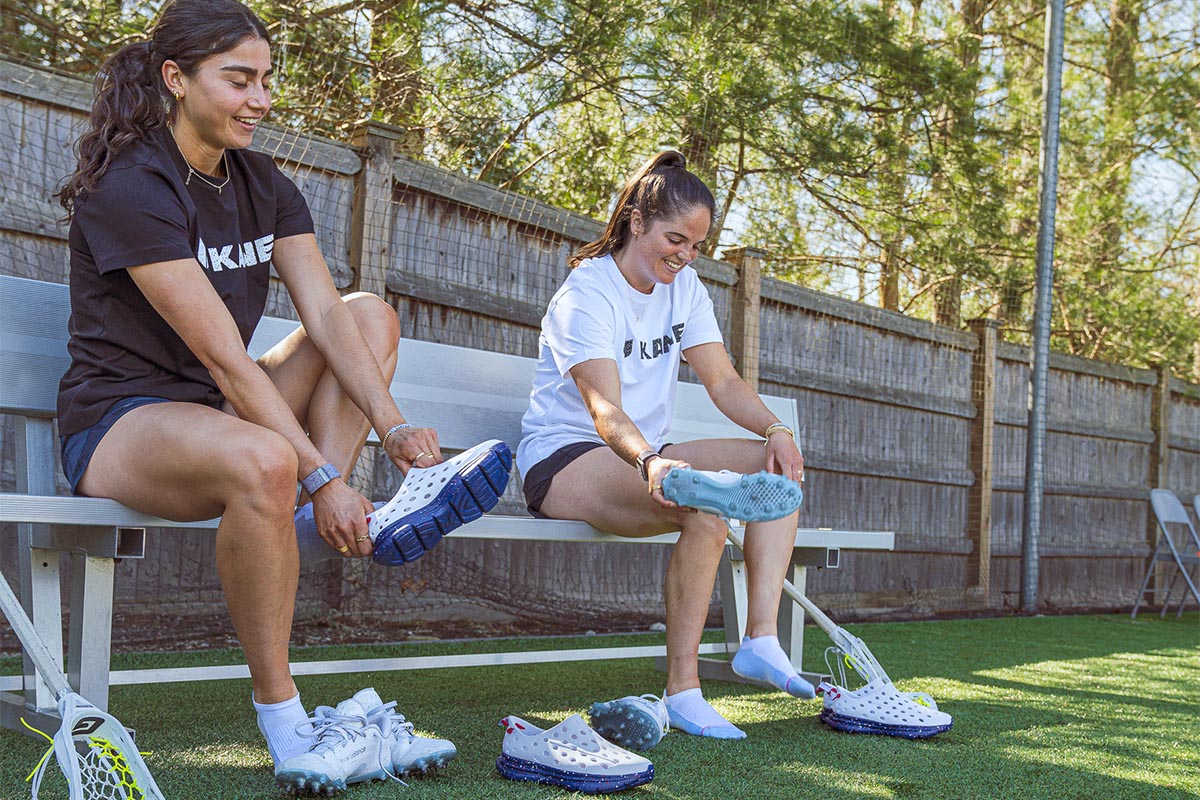Bottom-of-foot pain while running: Causes, treatment, and prevention guide
That sharp, stabbing sensation in the bottom of your foot during or after a run can stop you in your tracks. Foot pain Foot pain ranks among the most frustrating obstacles for runners at any level.
Understanding what's causing your discomfort is the first step toward getting back to your training pain-free. Most foot problems are treatable and preventable with the right approach.
Key takeaways
- Bottom-of-foot pain usually stems from overuse injuries like plantar fasciitis caused by training errors, poor footwear, or biomechanical issues.
- Early intervention can prevent weeks of sidelined training. Address foot pain early to avoid serious complications.
- Success requires rest, proper running shoes, targeted strengthening, and recovery strategies, including supportive recovery footwear like the KANE Revive .
Why does the bottom of my foot hurt when I run?
Running involves repeated impact. Your foot strikes the ground roughly 1,500 times 1,500 times per mile, and the bottom of your foot bears the brunt of this repetitive force.
Your plantar fascia (a thick band of fibrous tissue running from your heel bone to your toes) acts as a shock absorber. Your foot arch distributes weight and provides spring. The ball pushes off with each step. When any part of this system becomes overloaded, you feel it.
Different types of pain signal different problems. Sharp, stabbing pain in your heel that's worst in the morning often points to plantar fasciitis. Burning pain or tingling in the ball of the foot suggests nerve compression. A gradual ache could mean stress fractures are developing.
Pay attention to location, intensity, and timing to address issues before they derail your running plan.
What are the most common causes of foot pain in runners?
Runners commonly face several foot conditions, each with distinct characteristics and triggers. Understanding which one you're dealing with makes all the difference in treatment.
Plantar fasciitis
Plantar fasciitis is the most common cause most common cause of heel pain and arch soreness. This painful condition occurs when the plantar fascia becomes inflamed from repeated stress.
Recognizing the symptoms
- The hallmark symptom is sharp heel pain during your first steps in the morning or after sitting for long periods.
- The pain typically decreases as you move, only to return after your run. You can experience foot pain along your arch, too.
TIP: If your first steps out of bed are painful, plantar fasciitis plantar fasciitis is the likely culprit.
What puts you at risk
Training errors
- Sudden mileage or intensity increases
- Running on hard surfaces without adequate recovery
- Biomechanical factors:
- Tight calf muscles or a tight Achilles tendon
- High arches or flat feet
- Certain foot shapes that create stress
- Equipment issues:
- Unsupportive shoes lacking arch support
- Worn-out running shoes past their mileage limit
Metatarsalgia
Metatarsalgia Metatarsalgia is pain in the ball of your foot from excessive forefoot pressure. You'll feel sharp, aching pain that worsens during push-off. Tight shoes, unsupportive shoes, and overpronation all contribute.
Stress fractures
Stress fractures are tiny cracks in your foot bones from repetitive stress. The pain starts mild and worsens with activity. You'll notice pinpoint tenderness, even when not wearing shoes. Risk factors include rapid mileage increases, hard surfaces, nutritional deficiencies, and worn-out running shoes.
Other foot conditions
Morton neuroma Morton neuroma involves tissue thickening around a nerve between your toes, creating sharp, burning pain in the ball of your foot with tingling or numbness. Sesamoiditis Sesamoiditis affects small bones beneath your big toe joint, causing pain near the big toe that worsens during push-off. Both conditions are aggravated by high arches, overpronation, and tight shoes that squeeze the foot.
What else causes foot pain in runners?
Wearing shoes that don't match your foot type creates mechanical stress throughout the lower leg. Worn-out shoes with degraded cushioning force your foot to absorb more impact with each stride.
Training errors
Increasing distance or intensity too rapidly accounts for the majority of runners' overuse injuries.
Your tissues need time to adapt to training stress. Proper training includes gradual progression and adequate rest days.
WATCH OUT: The running surface matters. Concrete transmits significantly more force than softer surfaces like tracks or trails.
Biomechanical issues
Your body's structure affects how force travels through your foot:
High arches or flat feet alter natural shock absorption
Limited ankle joint flexibility restricts normal movement patterns
Tight calves and Achilles tendon shift stress
Running form problems
Poor mechanics compound biomechanical issues:
Overstriding increases the impact forces on your heel
Heavy heel striking creates excessive shock through your foot
Inadequate cadence often leads to both
What should I do when foot pain strikes?
When pain strikes, quick action prevents a minor issue from becoming major. Many experts recommend the PEACE and LOVE protocol PEACE and LOVE protocol to alleviate pain and initiate healing.
PEACE protocol (first few days)
Protect: Stop activities that increase pain. Sharp, worsening pain signals you need to stop immediately and take weight off the affected foot.
Elevate: Raise your foot above heart level to reduce swelling and promote blood flow.
Avoid anti-inflammatories: While NSAIDs (nonsteroidal anti-inflammatory drugs) provide temporary relief, they can interfere with healing. Use sparingly and never to mask pain while running.
Compress: Use an ankle brace or compression sleeve to limit swelling and provide support.
Educate: Understand your condition and avoid passive treatments that don't address root causes.
LOVE protocol (after initial days)
Load: Gradually reintroduce movement as pain allows. Modified activity maintains tissue health without aggravating injuries.
Optimism: Maintain a positive mindset through the healing process.
Vascularization: Engage in exercises like swimming or cycling that promote circulation without impact.
Exercise: Restore strength and mobility strength and mobility through foot stretches and strengthening work like toe curls and calf raises.
Additional relief strategies
- Beyond PEACE and LOVE, focus on what you wear throughout recovery.
- The shoes you wear shoes you wear throughout the day maintain alignment and prevent compensation patterns. Avoid shoes lacking support, such as flip-flops, that stress healing tissues.
- Recovery footwear designed with orthopedic principles, like the KANE Revive , can support healing by maintaining proper foot alignment while allowing muscles to relax (more on this in the prevention strategies below).
When to see a health professional
- Seek professional medical advice if:
- Severe pain prevents weight-bearing on the affected foot
- Pain persists despite two weeks of rest and treatment
- Symptoms worsen rather than improve
- Visible swelling, bruising, or deformity appears
- Numbness or tingling accompanies pain
- A healthcare provider will conduct a thorough examination, possibly including imaging, to check for stress fractures or other structural problems.
- Early intervention requires less intensive treatment. Runners who address problems promptly return to training faster than those who push through pain.
Long-term strategies to prevent foot pain
Returning to running pain-free requires more than waiting for symptoms to disappear. Address the root cause to avoid foot pain.
Prevention takes minutes a day. Treatment takes weeks or months. The strategies below will help keep you running instead of sidelined.
Choosing the right running shoes
Footwear is the foundation of injury prevention. The right running shoes affect how force is distributed across your foot.
Runners with high arches often find cushioned shoes with neutral support a good fit. Those with overpronation benefit from stability shoes. A gait analysis identifies your specific needs.
Essential features include adequate cushioning, arch support matching your foot shape, a roomy toe box, and a flexible forefoot for natural movement.
Replace running shoes every 300-500 miles. Worn midsoles lose shock absorption, and wearing them past their lifespan can increase injury risk.
Consider shoe inserts or custom orthotics if you have biomechanical issues.
Strengthen, stretch, and train smart
Building foot resilience requires strengthening muscles, maintaining flexibility, and training intelligently.
Strengthening exercises
Consider performing these exercises on non-running days to build foot resilience:
Toe curls: Scrunch a towel toward you using your toes (three sets of 15 reps)
Arch doming: Press toes down while lifting your arch (three sets of 10 reps, hold for five seconds)
Calf raises: Rise onto toes, hold for two seconds, lower slowly (three sets of 15 reps)
Balance work: Stand on one foot for 30 seconds
PRO TIP: Do these exercises barefoot to maximize foot muscle activation. Start conservatively and increase gradually.
Daily stretching routine
Perform these stretches every day, especially after running:
Calf stretch: Wall lean with back leg straight, hold 30 seconds each side
Plantar fascia stretch: Pull the big toe back toward the shin, hold 30 seconds
Ankle circles: 10 rotations each direction
Smart training principles
For proper training progression, increase weekly mileage gradually. Include recovery runs recovery runs at an easy pace, rest days, and activities that don't add strain, such as cycling or swimming.
Vary surfaces by rotating between road, trail, and track to prevent repetitive stress. Work on running form: land with your foot under your body, and avoid overstriding.
Recovery footwear between training sessions
What you wear between training sessions is just as critical as your running shoes. Your foot and ankle benefit from continuous support to maintain alignment while tissues repair.
Standard casual shoes can let your foot collapse, shifting stress to already-fatigued structures. Recovery footwear Recovery footwear designed with orthopedic principles keeps key pressure points supported while allowing relaxation of overworked muscles.
KANE recovery footwear KANE recovery footwear takes a science-backed approach to post-run foot care. Developed with input from Dr. Daniel Geller, DPM, a foot and ankle surgeon specializing in sports injuries, KANE shoes integrate recovery-based orthopedic principles that address the specific needs of athletes."The KANE Revive has a proprietary blend of EVA known as RestoreFoam. It's a dual-density, which means it's got cushioning and it's got support. It's going to stabilize your foot. It's going to create amazing foot capture with every step you take, “ says Dr Geller.
The Heel and foot capture technology allows complete foot relaxation while reducing stress on your calves and Achilles, which is critical for preventing plantar fasciitis and other injuries. Raised footbed nodes stimulate and massage key pressure points, promoting circulation to aid recovery.“The nodes on the bottom of the foot are amazing because it's a way to stimulate our sensory response. It's a way to stimulate our soft tissue, it'stfac a way to stimulate our nervous system which starts to increase local blood flow. I tis going to mitigate some of that inflammatory response and it's just going to act as just a generalized massage feeling, which we know feels good to our soft tissue system,” adds Dr Geller.
In addition, the 9mm heel-to-toe drop enables smooth energy transfer, making them comfortable for all-day wear.
When and how to wear recovery footwear
The best time to use recovery footwear is immediately after running or intense physical activity. This helps manage inflammation when your tissues are most vulnerable.
Wear them for warm-up drills, cool-down periods, post-run stretching, mobility sessions, physical therapy appointments, travel to and from the gym, and casual wear throughout your recovery day.
Make sure they fit properly (not too tight or too loose). The structured support should feel secure without restricting movement.
Get back to running pain-free
Bottom-of-foot pain doesn't have to derail your running goals. With proper treatment and prevention strategies, most runners return to full training within weeks.
The key is addressing pain early, identifying root causes, and supporting your foot throughout recovery. Proper footwear, targeted strengthening, smart progression, and adequate rest work together to keep you running strong.
Listen to your body. Respect pain signals. Give your feet the support they need.
Frequently asked questions
Should I stop running if my feet hurt?
If you feel sharp, sudden pain that worsens as you continue running, you should stop immediately. Pushing through can turn a minor issue into something more serious.
Consider modifying your running plan by reducing intensity and distance if you’re experiencing mild pain that decreases as you warm up. If pain persists beyond a few days or increases with activity, rest your foot. Many runners who push through end up with chronic issues.
Consider cross-training alternatives, such as swimming or cycling, that maintain your fitness without stressing your feet.
How do you relieve pain in the bottom of your foot when you experience foot pain?
Follow the PEACE and LOVE protocol:
PEACE (first few days): Protect, elevate, avoid anti-inflammatories, compress, and educate yourself about your condition.
LOVE (after initial days): Load gradually, maintain optimism, promote vascularization through cross-training, and exercise through foot stretches and strengthening.
Wear supportive footwear throughout the day. If pain persists, consult a physical therapist or another healthcare provider for personalized treatment options.
How do you get rid of foot problems from running?
Start with appropriate rest: a few days for minor inflammation, six to eight weeks for stress fractures.
Next, identify and correct contributing factors: replace worn-out shoes, fix training errors, improve calf and Achilles flexibility, strengthen foot muscles, and correct running form.
Physical therapy can help guide your return to running. Gradually reintroduce running with walk-run intervals, slowly increasing time over several weeks. Progress only if pain stays below three out of 10.
Is it OK to keep running with plantar fasciitis and foot conditions?
Experts recommend taking a break from running when you're experiencing acute pain due to plantar fasciitis. Continuing to train with severe pain risks chronic damage.
Mild cases may allow modified training if you're not experiencing much pain, and you're actively treating the condition. Consider reducing mileage and avoiding speed work or long runs.
Monitor symptoms closely. Worsening or lingering pain means you need to back off. Pushing through the pain can lead to shin splints and runner's knee.
Consulting a physical therapist or other healthcare provider will arm you with personalized guidance to help manage your discomfort and plan a return to running.
No content on this site should ever be used as a substitute for direct medical advice from your doctor or other qualified clinicians.



































